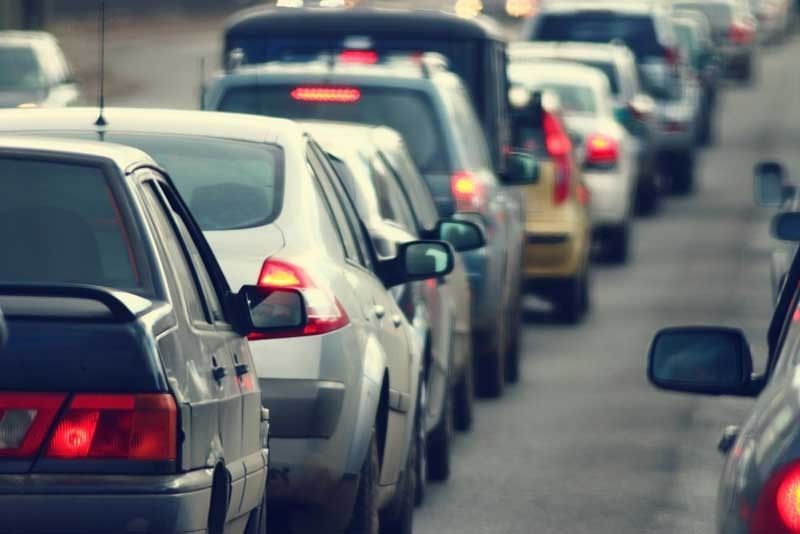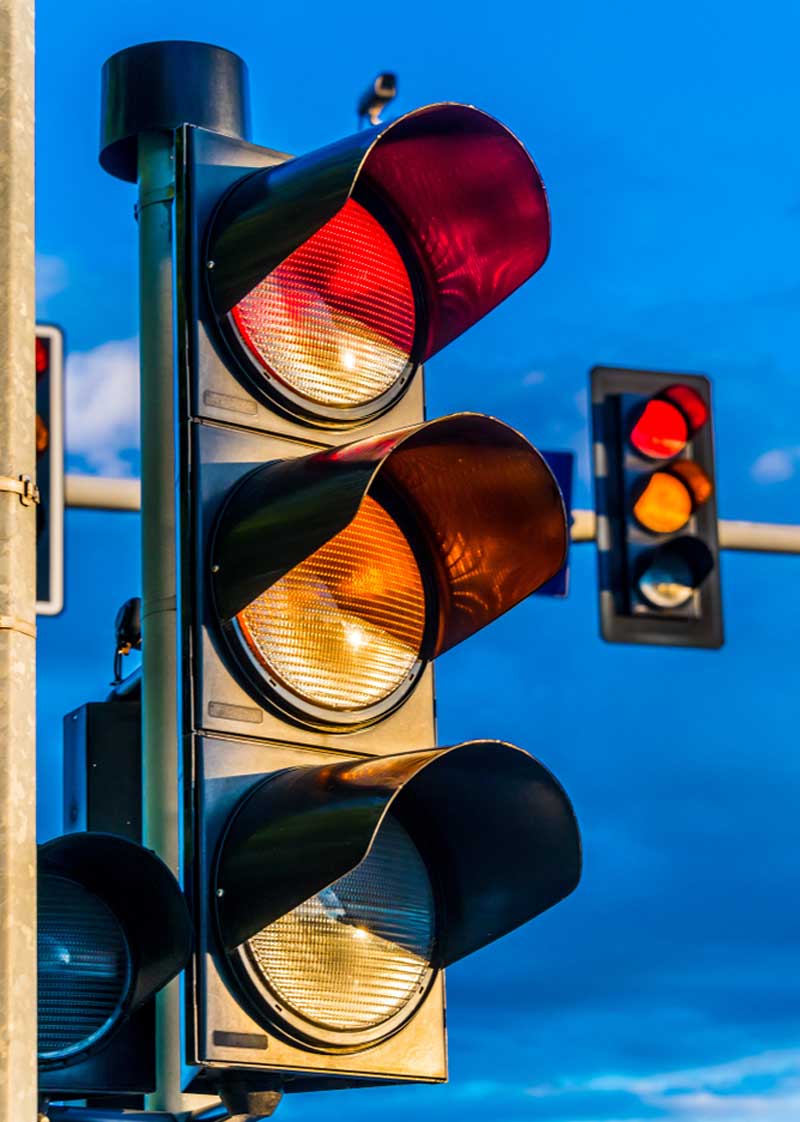STUCK IN TRAFFIC: The promise of solving traffic congestion

MANILA, Philippines — President Duterte’s promise of solving the traffic gridlocks on EDSA has found itself stuck in traffic thus far, but that may not be for long as the government hopes to see soon the fruits of its aggressive infrastructure push. Led by two of Duterte’s trusted Cabinet members—Arthur Tugade and Mark Villar, Secretaries of the Department of Transportation (DOTr) and Department of Public Works and Highways (DPWH), respectively—the government claims to have laid the groundwork towards untangling traffic congestion and enhancing mobility and connectivity through its so-called Build Build Build program.
The tandem of Tugade and Villar have been the face over the past three years of the Duterte administration’s initiative to usher in the golden age of infrastructure in the country. Both secretaries have been working closely with other agencies and the private sector to achieve the President’s directive of “making the Filipino life comfortable,” which includes among others the daunting task of solving the Metro Manila’s worsening traffic woes.
“As you can see, there is an overall effort to decongest. The foundation of that mobility has been laid,” Tugade said.
“We are doing now a 24/7 construction formula. Originally, before when you have a project, you do eight to 10 hours. Now, we are doing 24/7,” added the transport chief, noting the government’s commitment in completing projects at the soonest possible time.
EDSA, the capital’s main highway which serves as a symbol of Metro Manila’s congested state of traffic, currently handles a daily volume of about 385,000 vehicles, far from its capacity of around 245,000 vehicles a day, according to the Metropolitan Manila Development Authority. Duterte last February admitted that while he was able to deliver on all of his campaign promises, he has yet to solve traffic congestion at EDSA. However, that does not mean the administration is giving up on fulfilling its promise with still three years left in office.
The goal, according to Villar, is to return EDSA traffic to an acceptable level before the President’s term ends by 2022 by taking out some 250,000 to 300,000 cars from the highway daily. Villar said the goal could be achieved upon the completion of various projects such as the Metro Manila Skyway Stage 3, NLEX-SLEX Connector Road, and the Estrella–Pantaleon bridge widening, among others.
The Metro Manila Skyway Stage 3, an 18.68 kilometer elevated expressway from Buendia in Makati City to the North Luzon Expressway in Balintawak, Quezon City, is seen reducing travel time from two hours to 15 to 20 minutes.
Another project by-passing EDSA is the NLEX-SLEX Connector Road, an eight-kilometer elevated expressway that extends the NLEX southward from the end of Segment 10 in C-3 Road, Caloocan to PUP Sta. Mesa, and connecting it to the Skyway Stage 3.

Villar said travel time between Clark and Calamba will be slashed from three hours to one hour and 40 minutes once the project is completed. Meanwhile, EDSA congestion is also expected to ease once the existing Estrella-Pantaleon Bridge is replaced by a three-span V-shape rigid frame with four-lane deck concrete deck slab of approximately 506.46 lineal meters to connect Estrella Street at Makati side to Barangka Drive at Mandaluyong side “We have gone a long way since we commenced this journey. Much has been done, but much still needs to be accomplished. We have to admit that as we are already halfway in revolutionizing our infrastructure, new formidable obstacles will surely emerge to impede us,” Villar said.
“But we count on to our sworn oath as public officials to give our utmost best and ensure that our people, the Filipino people, will have access to efficient and effective infrastructure facilities. Expect that in the subsequent years, more and more developments will eventually unfold before our eyes, leading us into achieving our vision of a strongly rooted, comfortable, and secure life,” he said.
Tugade, for his part, said close collaborations across all concerned agencies are ongoing to go as far as making the President’s promise of a five-minute travel time from Cubao to Makati possible. “We take this as a reasonable challenge on our part to make sure that the wish and the hope of the President is given life and materializes. Discussion with all concerned agencies in terms of what is needed to be done in terms of structure, in terms of road configurations, in relation to vehicles moving in one direction, in so far as discipline and even as far as colorums are concerned,” he said.
“If you combine all of these, there is a chance. I’m sure we all want that the travel time between Cubao and Makati is five minutes,” Tugade said. But for the transport chief, solving the EDSA’s traffic problem would be much more easier and faster if only emergency powers have been granted to the President.
“We have long been asking for that emergency powers, since the start of the President’s term we were already asking for it. But due to various reasons it was not given. It will really be a big help, especially on procurement and ensuring a uniform traffic system,” Tugade said.
However, the administration’s massive build build build initiative is not focus on decongesting Metro Manila alone.
The DPWH is expanding highways and expressways to give way to regional development and competitiveness. The agency intends to build and lay the ground work for the 1,049 kilometers of new high standard highways and expressways in Luzon, Cebu and Davao with a total investment cost of P776 billion.
Under the Luzon Spine Expressway Network Program alone, a total of 888.26 km of high standard highways and expressways in Luzon are targeted to be implemented and constructed, which is more than twice the 382.26 km of existing expressways.
Once the projects under this program are completed, Villar said the travel time from Ilocos to Bicol will be reduced from 19 hours and 40 minutes to eight hours and 15 minutes. The Mindanao Road Development Network Program is also set to improve the logistics network in growth corridors and conflict affected areas in Mindanao through the construction, rehabilitation and improvement of about 2,847-km road network.
Under the Duterte administration, the DPWH said a total of 9,845 kilometers of roads and 2,709 bridges have been constructed, maintained, widened, upgraded and rehabilitated so far. The DOTr, for its part, claimed to have “already made huge strides in ushering a comfortable life to the riding public through new and improved infrastructures, sound programs and services, and addressing longstanding issues.”
Aside from construction and rehabilitation of roads and bridges, vital to the decongestion of land traffic is the development of railways and train systems. Problems that plagued the nation’s railway systems were lack of coaches, numerous breakdowns, and daily passenger overflow.
Within the first half of the current administration, the agency has started the construction of six railway projects, namely the PNR Clark Phase 1, Metro Rail Transit Line 7, LRT Line 2 East Extension, LRT Line 1 Cavite Extension, the Common Station, and the Metro Manila Subway Project. From a total of 77 kilometers of operational railways, the DOTr plans to further expand its current length to a total of 1,900 kilometers by 2022.
The country’s rolling stock fleet of 221 operational train cars, also known as light rail vehicles or coaches, in 2016 is also eyed to grow to more than 1,200 by the end of the Duterte adminstration. Together with the development of railway systems, the country’s first landport—the Parañaque Integrated Terminal Exchange—was constructed and started operations, while 159 commercial port projects and 41 social and tourism port projects were also completed.
The DOTr said these projects would give Filipinos a basket of solutions towards enhanced connectivity and mobility.
Considering all the infrastructure developments taking place across the nation--majority of which are nearing completion—Tugade and Villar believe the light at the end of the tunnel can finally be seen.
“We have witnessed what the government has done in the past three years. But we did not do this on our own. We are able to do this because we have a leadership that is coming from a vey dedicated and very committed President. We are able to do this because we have a collaborative sharing among the cabinet members. But more importantly, we are able to do this because we have the private sector that has the trust in this administration, and because of the support and willingness to invest in the infrastructure,” Tugade said.
“We are able to show you that in the last three years, we are able to perform. We assure you because in the last three years, the best is yet to come,” he said.
- Latest






























